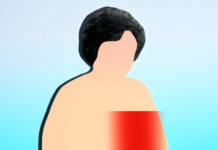That afternoon, the patient saw the nurse practitioner at her doctor’s office. She was wheezing and her lung exam was abnormal, the N.P. told her. A rapid flu test was negative. The slower but more reliable test would take a day to come back.
In the meantime, the nurse practitioner told her, she probably did have the flu. They couldn’t test for the coronavirus; at that time, only patients in the hospital who have a fever, a cough and a possible contact with someone known to be infected qualified for the test. He gave her a prescription for Tamiflu, an inhaler for the wheezing and an anti-nausea medication.
That was six days ago. The second flu test sent by the N.P. was also negative. She took the Tamiflu but suspected that her sister was right — she probably was infected with coronavirus. She moved into the guest bedroom and tried to avoid passing it on to her husband and children.
This is how most of the likely coronavirus infections have gone at this point. Tests are still fairly hard to come by in the United States, and that limitation makes the diagnosis unofficial and therefore uncounted. Patients have what appear to be the typical symptoms of Covid-19: a nonproductive cough, chest tightness, and in some cases some mild gastrointestinal symptoms — usually nausea, vomiting and diarrhea. In this case, the patient feels a little better now but is still waiting to see if she starts to get worse a week into the infection, as so many in China did.
However, not until testing becomes more readily available will the full spectrum of the disease and its symptoms and clinical presentations be recognized here. The very first cases reported in Wuhan, China, were patients sick enough to go to a hospital. Because of the Chinese government’s aggressive testing, we know that many more had milder symptoms, and sometimes no symptoms at all.
Covid-19 was identified as a new disease so rapidly thanks to a screening program China set in place after their last epidemic, nearly 20 years ago, of SARS, or severe acute respiratory syndrome, also caused by a new version of the coronavirus. The program requires hospitals to report patients who have a severe pneumonia that was not found to be caused by any of the known infectious agents.
The SARS outbreak arose in Guangdong province in southeastern China and rapidly became a global epidemic in 2002. The official count of that virus was that it infected 8,098 people in 17 countries and resulted in 774 deaths. That early warning system, set in place in the aftermath, allowed China to recognize this new coronavirus that causes Covid-19 after only a handful of patients had gone to the hospital in Wuhan, in December 2019.
Source : Nytimes











